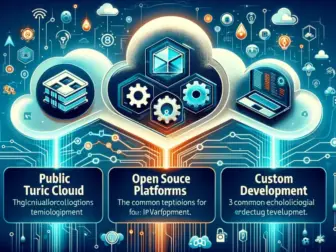Tag - IoT platform development
Discover the Future: Key Strategies for Developing a Robust IoT Platform
Discover the Future: Key Strategies for Developing a Robust IoT Platform
The Internet of Things (IoT) is rapidly transforming the way we interact with the world around us. From smart homes and connected cars to industrial automation and smart cities, IoT platforms are at the heart of this technological revolution, serving as the backbone for device connectivity, data collection, and intelligent decision-making. Developing a robust IoT platform requires a strategic approach that encompasses various technical and business considerations.
Firstly, it is essential to identify the core objectives of your IoT platform. This involves understanding the specific needs of your target market, whether it’s consumer, enterprise, or industrial users. By setting clear goals, you can align the platform’s development with the expected outcomes, such as improved operational efficiency, enhanced customer experiences, or the creation of new revenue streams.
Another critical element is ensuring scalability and flexibility in your platform’s architecture. IoT ecosystems are dynamic, with the number of connected devices potentially reaching into the millions. Your platform must be able to scale seamlessly to accommodate this growth without compromising performance. This is often achieved through cloud-based solutions, microservices architectures, and utilizing scalable database technologies.
Security is a paramount concern in IoT platform development. Every connected device presents a potential entry point for cyberattacks, making robust security measures non-negotiable. This includes secure device authentication, data encryption in transit and at rest, regular software updates, and following best practices for cybersecurity. Additionally, compliance with relevant data protection regulations, like GDPR or CCPA, is crucial to maintain user trust and avoid legal repercussions.
Data management and analytics are the core capabilities that give IoT platforms their intelligence. You must implement efficient ways to collect, store, process, and analyze the vast amounts of data generated by IoT devices. Advanced analytics, machine learning algorithms, and real-time processing capabilities can provide actionable insights, enabling predictive maintenance, energy optimization, and other smart applications. Additionally, offering user-friendly dashboards and reporting tools can help users make the most of their IoT data.
Interoperability is another key factor to consider during IoT platform development. With a myriad of devices from different manufacturers, communication standards, and protocols, your platform should facilitate smooth integration and data exchange. Adopting open standards and APIs can enhance interoperability, making it easier for third-party devices and applications to connect to your platform.
User experience (UX) should not be overlooked in the pursuit of technical excellence. A successful IoT platform must be intuitive and easy to use, enabling users to manage their devices and data without requiring extensive technical knowledge. This includes a straightforward setup process, clear documentation, and responsive customer support. Enhancing UX can lead to increased adoption rates and customer satisfaction.
Finally, to ensure the continued success of your IoT platform, it’s essential to establish a vibrant ecosystem. This involves partnering with hardware manufacturers, software developers, service providers, and other stakeholders to create a comprehensive offering that meets the diverse needs of users. By fostering an active community and marketplace around your platform, you can encourage innovation and keep the platform relevant as the IoT landscape evolves.
In conclusion, developing a robust IoT platform demands a multifaceted approach that balances technical prowess with user-centric design. By focusing on scalability, security, data analytics, interoperability, user experience, and ecosystem development, you can create a platform that not only meets the current demands of the IoT market but is also prepared for its future growth and challenges.
